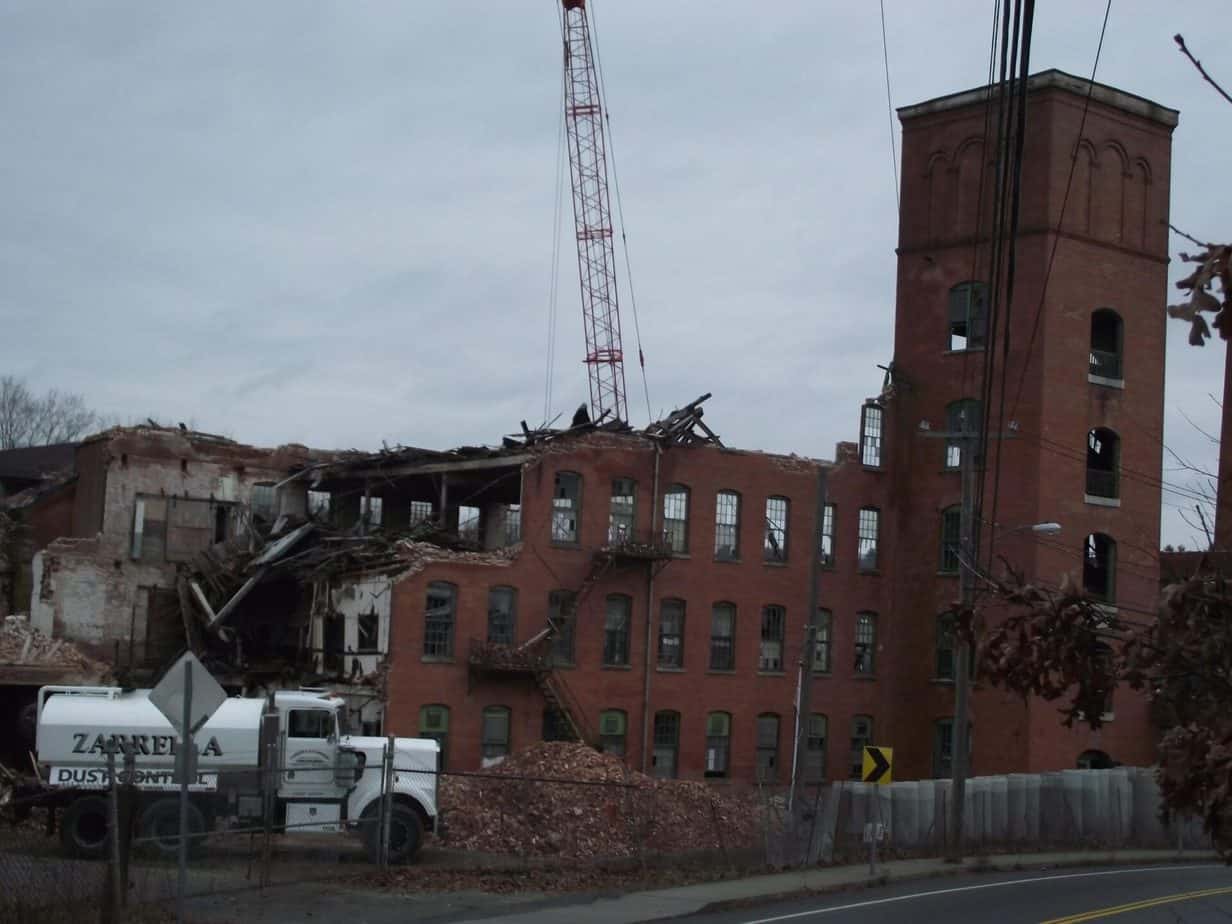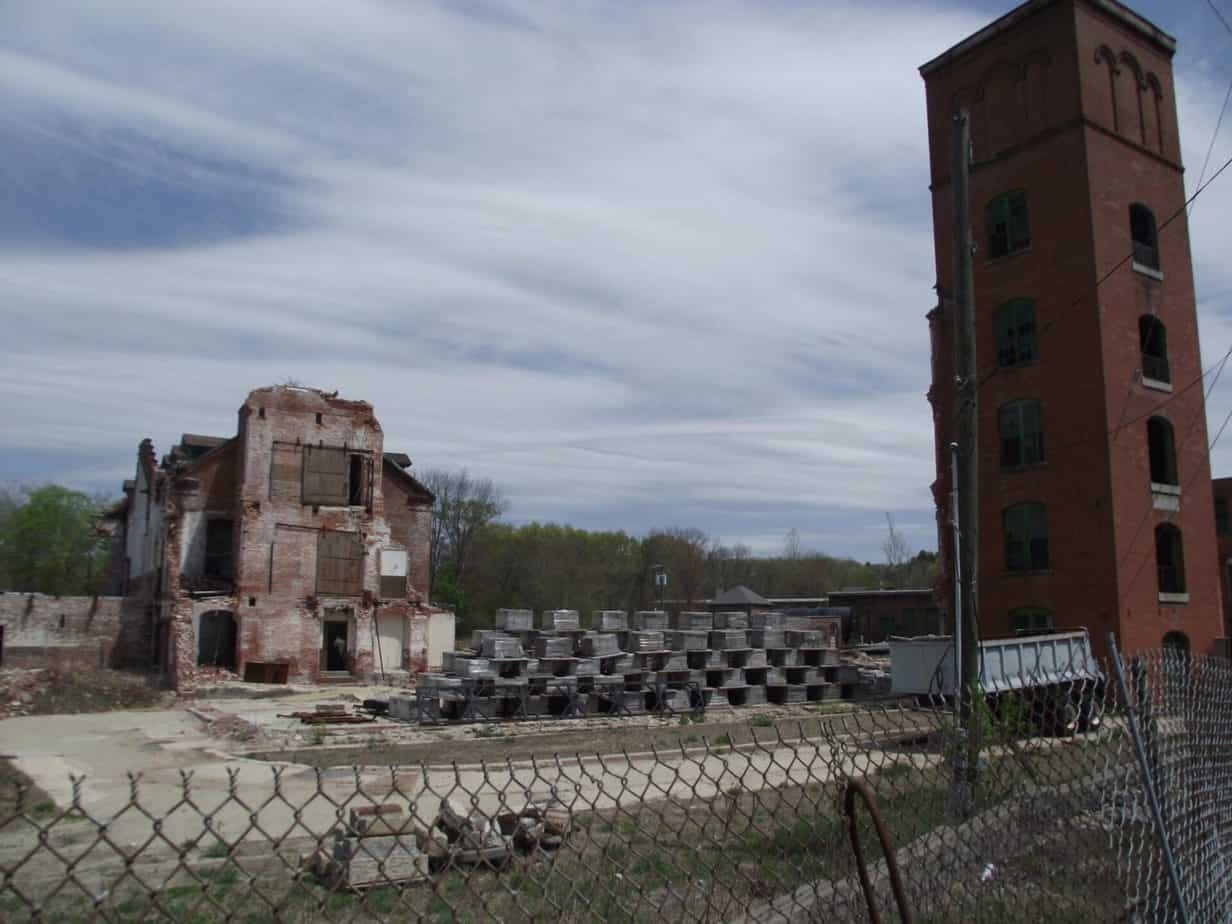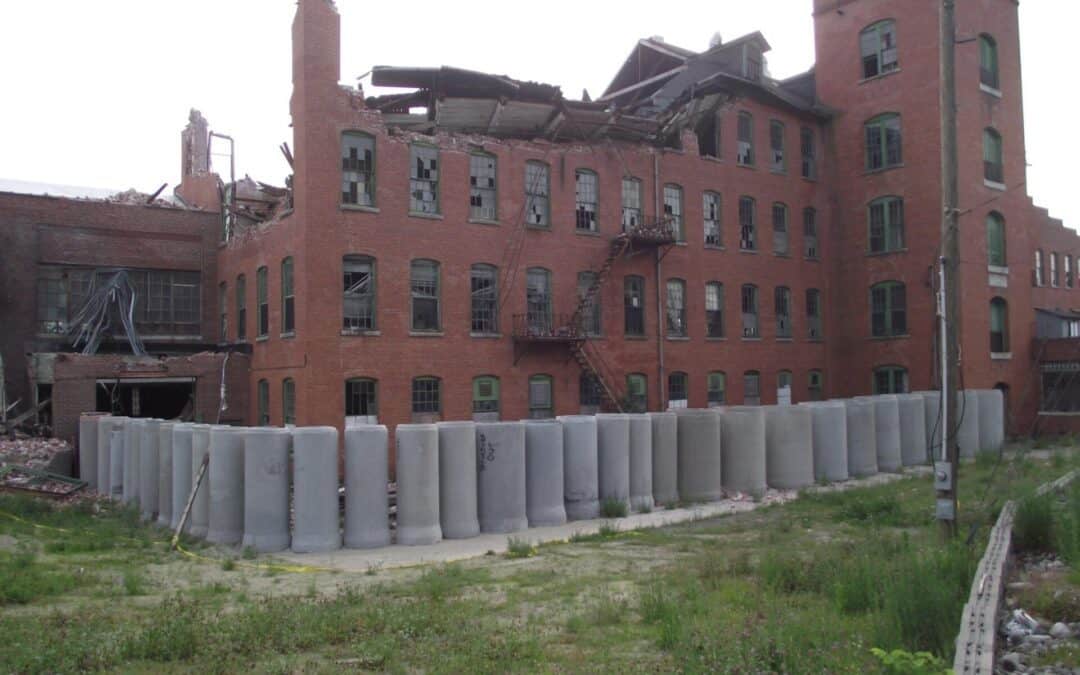The roof of the historic Dayville Mill (also known as the Prym Mill) collapsed in 2010 and again in 2011, while in the Transfer Act program. Not only was costly remediation work being deferred, but so too was maintenance of the building. The main mill building was subsequently demolished leaving the tower and ancillary buildings. Ten years later the property still has not closed out of the program.
For decades the Connecticut Property Transfer Act has served as the state’s primary tool with which to compel environmental cleanup of certain properties – but it’s an onerous law. Complying with it has often been a lengthy and costly process, killing many real estate deals and ruining plans for the reuse of historic mills and other industrial and commercial properties.

Thus, there was reason for optimism in October when the General Assembly passed, and Governor Lamont signed, “An Act Revising Provisions of the Transfer Act and Authorizing the Development and Implementation of a Release-Based Remediation Program.” Among its many provisions, Public Act 20-9 will eventually eliminate the Transfer Act – replacing it with a program of “release-based reporting and cleanup.”
Initially passed in the 1980s, and revised several times since, the Transfer Act requires certain forms to be filed with the state when a property is sold or otherwise transferred, committing a “certifying party” to investigate and clean up. Among its shortcomings is the fact that it didn’t necessarily apply to the most polluted sites, while unlucky sites subject to it, including properties with historic buildings, were often mired in regulatory limbo for years.
The new law is broad in scope, requires Connecticut DEEP to develop a heap of new regulations, and authorizes a Working Group that has already convened to begin the process of implementing these changes. If successful, the regulatory transformations authorized by P.A. 20-9 will go into effect beginning in just two years and will make it easier to achieve cleanup standards. The new program should have many benefits to Connecticut, including improving redevelopment prospects for many historic commercial and industrial properties.

However, even the best-intentioned law may have unintended consequences. Thus, as draft regulations are developed and issued for public comment, it is crucial for the historic preservation community to evaluate the drafts with an eye toward understanding how these regulations might impact historic preservation and ensure stakeholder concerns are heard and considered at the State House. With the end
of the Transfer Act – and a lot of hard work – Connecticut should eventually have a new environmental cleanup program that will benefit the economy and the environment, while improving the outlook for preservation and reuse of some of our most important historic industrial landmarks.
Guest blog article written by Wayne Bugden, Owner/Manager of One Earth Environmental, LLC.
Photo credits: Wayne Bugden

